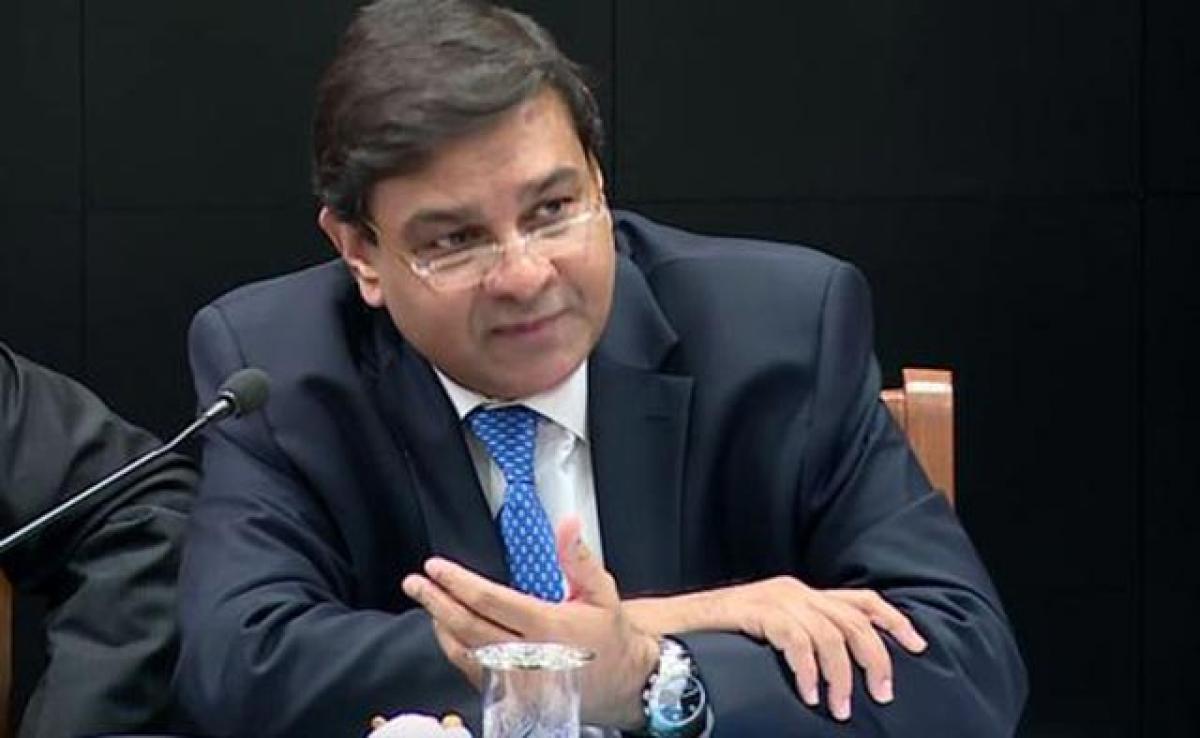Live
- Vizianagaram: Aditi Gajapathi Raju files nomination papers
- Visakhapatnam: Summer special trains to clear extra rush
- Nagarkurnool: Theft in Lakshminarasimha swamy temple
- Gold rates in Hyderabad surges, check the rates on 25 April 2024
- Gold rates in Delhi surges, check the rates on 25 April 2024
- Gold rates in Vijayawada surges, check the rates on 25 April 2024
- Gold rates in Visakhapatnam surges, check the rates on 25 April 2024
- Visakhapatnam: YSRCP candidate Adari Anand Kumar conducts door-to-door campaign
- YS Jagan arrives in Pulivendula, to address in public meeting and file nomination
- Alliance candidates set to sweep in Anakapalli, says Defence Minister Rajnath Singh
Just In

Kenya-born Urjit R Patel took charge as new RBI chief at a leisurely pace. The day Raghuram Rajan, the outgoing Reserve Bank of India (RBI) Governor, demitted office was a Sunday.
Well aware of apex bank inside out, he is sure to fend off crises
Kenya-born Urjit R Patel took charge as new RBI chief at a leisurely pace. The day Raghuram Rajan, the outgoing Reserve Bank of India (RBI) Governor, demitted office was a Sunday. The following day, Monday, was a national holiday on account of Ganesh Chaturthi. Patel officially began working on Tuesday, two days after he – true to his nature – quietly checked into the RBI as its 24th Governor.
challenges
- Build cordial ties with central government
- Strike a fine balance between inflation and growth
- Take all members of MPC along with him on inflation-targeting
- Redemption of FCNR deposits worth $24-billion
- NPAs or bad loans on course to doubling to 8.5%
The apex bank announced his arrival in a terse statement. But by any stretch of imagination, the next three years are not going to be as tranquil as his first two days in the hot seat at the Mint Street because Dr Patel, as he is known among his close circles, faces numerous challenges.
Additionally, he has to carry forward a ‘tall’ agenda set by his predecessor and mentor Rajan, that centres around the banking sector’s non-performing assets (NPAs), rupee stability and inflation – the three contentious issues that will test his mettle to the core. "He has worked with IMF, he has worked with the corporate sector and he was with the Brookings Institution. So, coming from different areas, he knows how things are and what kind of action is required,” Devendra Kumar Pant, Chief Economist, India Ratings & Research, said on the new Governor Patel.
The first challenge for the Oxford, Yale University-educated economist is to build a cordial relationship with the central government, and also with those at the North Block, the headquarters of finance ministry in New Delhi. This requires his first attention because Rajan, described by many as rock star governor, seemed to have ruffled many a feather on the wrong side, with his candid comments on Indian economy and other issues.
Secondly, Patel will have to strike a fine balance between inflation and growth. That’s not going to be an easy task though. With the country receiving sufficient rainfall and the central government implementing Seventh Pay Commission this year, inflationary pressures are likely to rear their ugly head once again, testing his acumen.
But the good thing is that he has stepped into this new role armed with rich experience in the inflation space. As a Deputy Governor of the RBI, he handled monetary policy division and played a key role in formulating the central government’s recent inflation roadmap aimed at bringing down the retail inflation to 4 per cent by March 2021 from the current level of over 6 per cent. It was hovering above 7.7 per cent when Rajan took charge in 2013.
However, the key tool at the disposal of the RBI to tame inflation is the key rate interest rates. Hitherto, the RBI chief was the sole authority to decide on which way the key repo and reverse repo rates should move. It’s no longer the case as the central government made changes to the RBI Act and brought in a six-member Monetary Policy Committee (MPC) to take decisions on the interest rates.
Though the RBI Governor and two of his deputies will remain as members of the committee, the apex bank chief has no major say whatsoever unless there is tie among the members. Patel will have to take all the members along with him and make a call on the inflation-controlling measures, without hurting the GDP growth.
The other issues that will test his patience include NPAs, banking licences, rupee depreciation and over foreign currency non-resident (FCNR) deposits worth $24-billion which are due for redemption later this year. The NPAs or bad loans are now expected to nearly double to 8.5 per cent of the total bank credit from 4.6 per cent a year ago.
This steep bad loan growth was driven by public sector banks (PSBs) whose cumulative bad loans rose to 9.32 per cent (Rs 4.76 lakh crore) in 2015-16 from 5.43 per cent (Rs 2.7 lakh crore) in 2014-15. Interestingly, most of these bad loans came to light after Rajan initiated serious efforts to clean up the banking system and now the responsibility rests on Patel to carry this contentious issue forward and take it to a logical conclusion.
All said and done, Patel is at an advantageous position. The 53-year-old economist is the second RBI chief in recent years to come from the internal ranks of the RBI after Dr Y Venugopal Reddy in 2003, and so, is well aware of the apex bank’s functioning inside out. Therefore, he is mostly likely to have a smooth sailing as long as he doesn’t ruffle wrong features. Over to Dr Patel for his three-year tenure at the RBI.

© 2024 Hyderabad Media House Limited/The Hans India. All rights reserved. Powered by hocalwire.com







